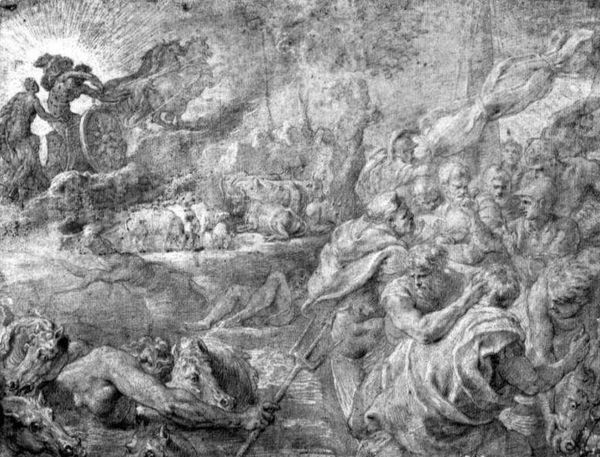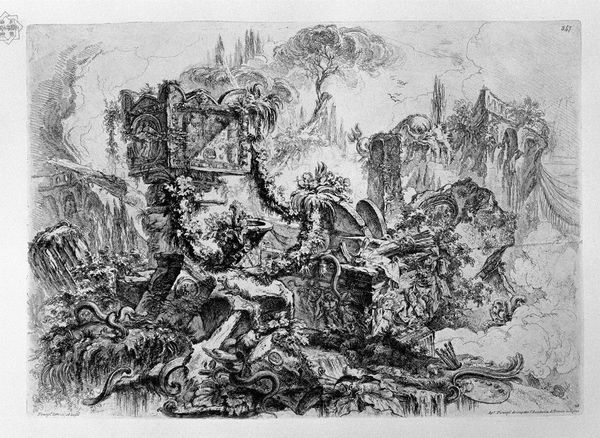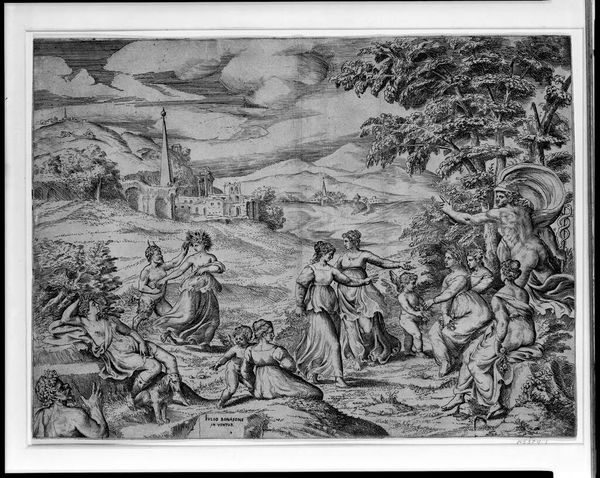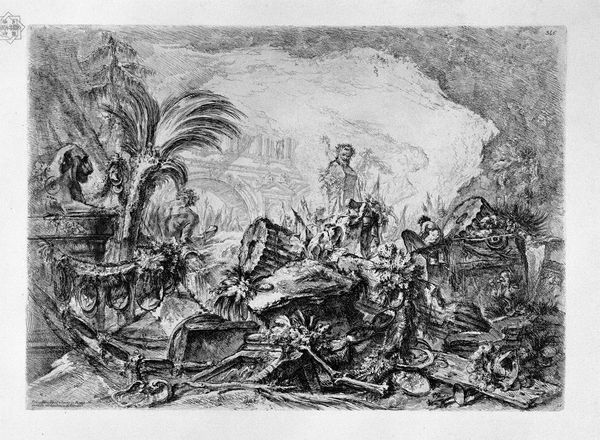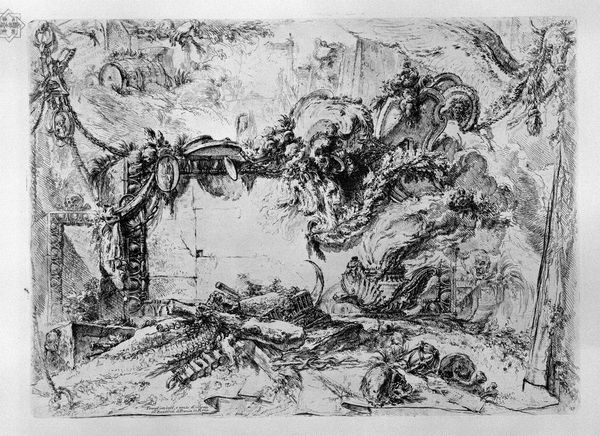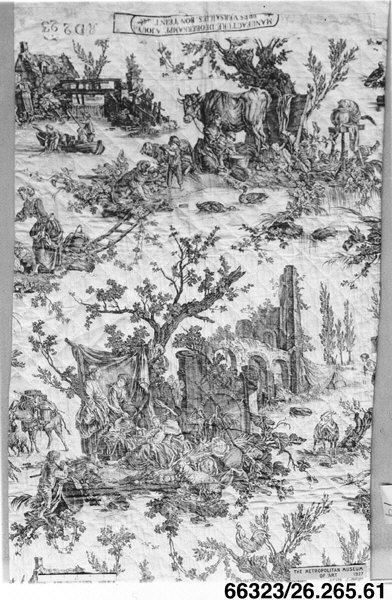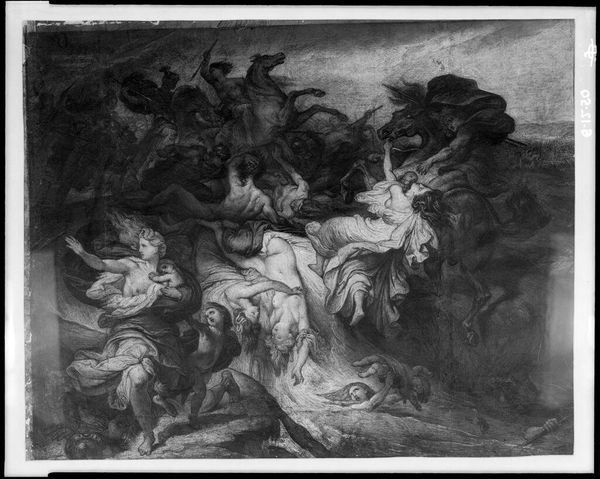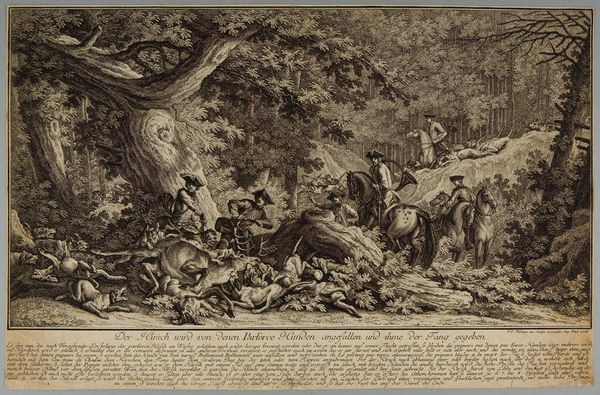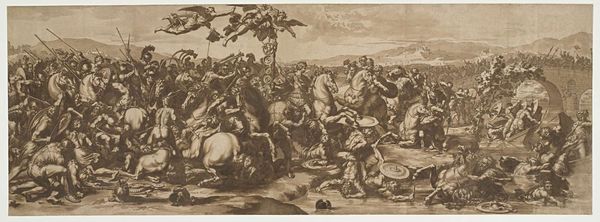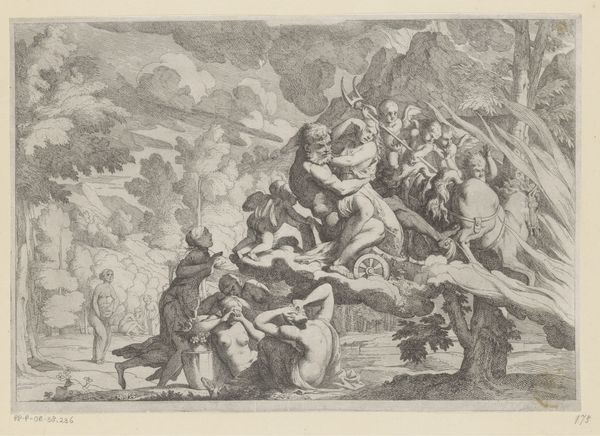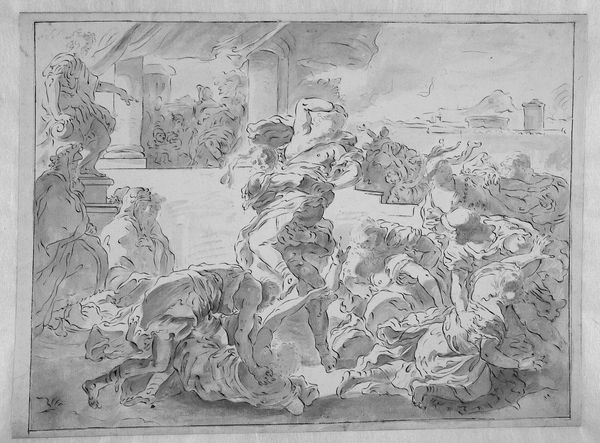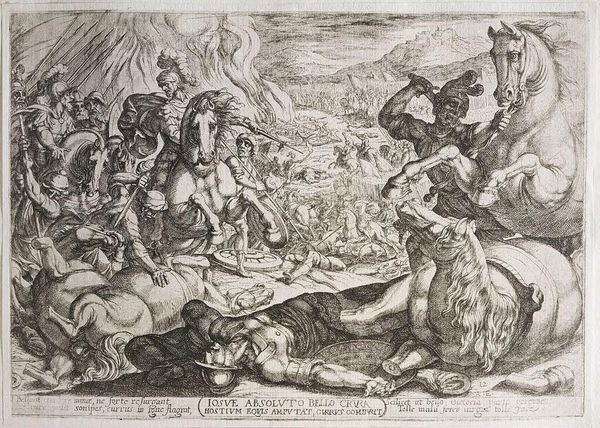
Caprice decoration: a skeletal figure in the center, among the ruins, fragments of sculpture, bones and skulls of which one half of the first floor 1748
0:00
0:00
Copyright: Public domain
Giovanni Battista Piranesi made this etching, “Caprice decoration: a skeletal figure in the center, among the ruins, fragments of sculpture, bones and skulls of which one half of the first floor,” some time in the mid-18th century. In this work, Piranesi, an Italian artist celebrated for his architectural fantasies, presents us with a scene teeming with the relics of a bygone era. The scattered bones and crumbling sculptures serve as potent symbols of mortality and the ephemeral nature of human achievement. Made during the height of the Grand Tour, when wealthy Europeans flocked to Italy to study its classical past, Piranesi’s ruins speak to the prevailing fascination with history. Yet, they also hint at a more profound commentary on the transience of power and glory. By juxtaposing these remnants with the stark reality of death, Piranesi invites us to contemplate the cyclical nature of civilization. To fully appreciate Piranesi's work, we need to consider the socio-political context in which it was created. Exploring travel journals, architectural treatises, and archaeological reports from the period will give us a better appreciation of this artwork.
Comments
No comments
Be the first to comment and join the conversation on the ultimate creative platform.
